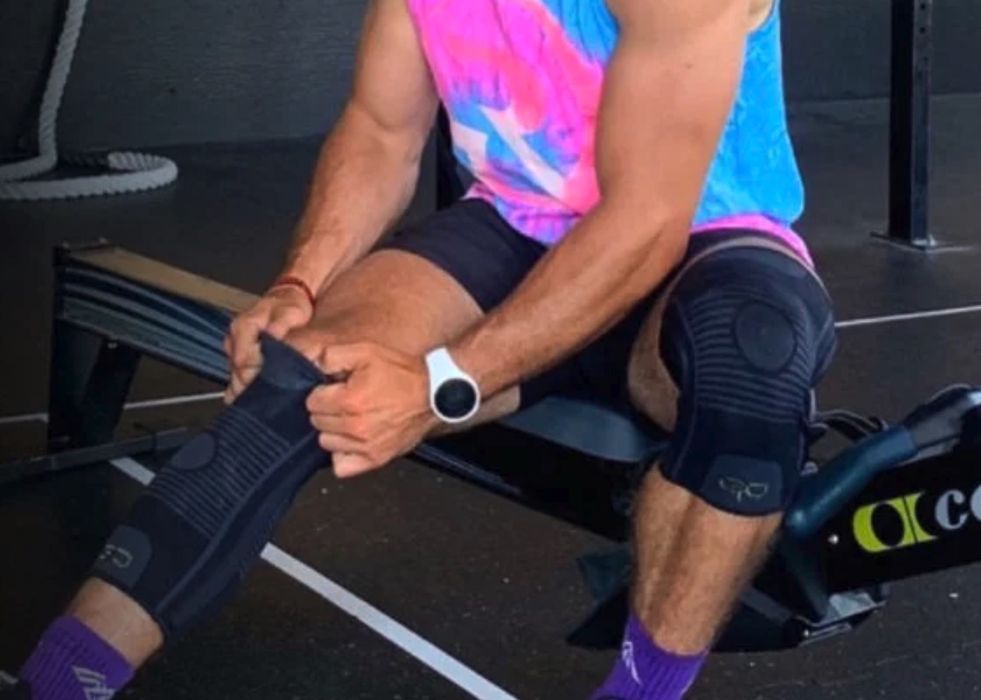
This week’s question begins with silicone 3D printing, but then moves to other options.
Reader Roy Carrillo called us for advice on a 3D printing venture, and gave permission to describe the story to readers.
Carrillo is the founder of GO Sleeves, an interesting California startup that is attempting to solve an annoying athletic problem: the repeated use of Kinesio tape. This tape is used by athletes to provide support to certain body joints, but at the same time provide a good amount of movement. The tape is stretchy and moveable.
However, for busy athletes, the prospect of buying and applying tape at each physical workout is expensive and tedious. It’s also wasteful as the tape is discarded.
Could there be a better solution? Carrillo believes so and his company has designed a reusable “sleeve” that fits over the joint — say, a knee — to provide the required support and flexibility.
The sleeve is composed of different parts, most of which are straightforward and can be easily manufactured. However, the key element is a silicone strip that fits inside and provides the major part of the support and flexibility.

Carrillo searched for different manufacturing options, and found that overseas options didn’t provide sufficient quality, and posed risks with supply chains. Like many manufacturers, he’s considering making these parts at their own facility, or at least within the region.
However, also like many manufacturers, Carrillo has no experience in 3D printing.
He called to ask which companies provide silicone 3D printing technology.
I had several answers. One answer was the list of silicone 3D printer options, and there aren’t very many. A few that come to mind are:
- InnovatiQ (formerly German RepRap), who make the LiQ 320 device that uses their LAM technology to print silicone objects
- Wacker’s ACEO did provide a silicone 3D printer, but they shut down in 2021
- Spectroplast provides a silicone 3D printer using their SAM technology, but we haven’t much from them and their website hasn’t been updated for well over a year
- PICSIMA provides a 2-part curing 3D printer that can make silicone objects
- Lynxter provides a syringe toolhead for their 3D printer that may be able to 3D print silicone
There aren’t many silicone 3D printers on the market, as you can see.
My second answer was focused on feasibility. Manufacturing parts can certainly be done with 3D printers, but one must consider two important factors: print cost and print time.
Printers and materials cost a significant amount of money, far more than would typically be used for conventional manufacturing processes. This is why we typically see 3D printing used only for “expensive” industries like aerospace, medical and such. It would have to be determined whether it’s financially feasible to use one or more of these printing options for silicone objects in this situation.
Secondly, the print time is long compared to the time required to make objects with conventional processes. In other words, if you need 100,000 parts and you can print ten per day on a printer, you’ll need 10,000 days to get the job done. That clearly doesn’t work, so instead you need 200 printers to complete the work in 50 days.
You can see that the cost of the printers would definitely affect the part’s unit cost. 200 printers at, say, US$5000 each would be US$1M, meaning each part would have to take on US$10 of print cost, to say nothing of the material and labor costs.
It may be that this project would best be undertaken through a 3D print service that would be already operating a fleet of machines, as that would reduce the acquisition costs. However, it is unlikely that you’ll find a service with a large amount of silicone 3D printers on hand.
Finally, my thinking is to question whether silicone is in fact the best material for a 3D printed option in this case.
I suggested Carrillo contact Carbon, who offer manufacturing-scale resin machines with a variety of materials. One of those materials just might have the right combination of properties for this application. It’s also possible to develop custom materials to do so as well.
Further, Carbon’s design software can create complex 3D printable lattice structures that could, in combination with the right material, offer the exact mechanical properties for this application.
The answer here may not be what it is initially suspected to be. 3D printing is a strange and different world where geometry can sometimes overpower material properties.
Via GO Sleeves
